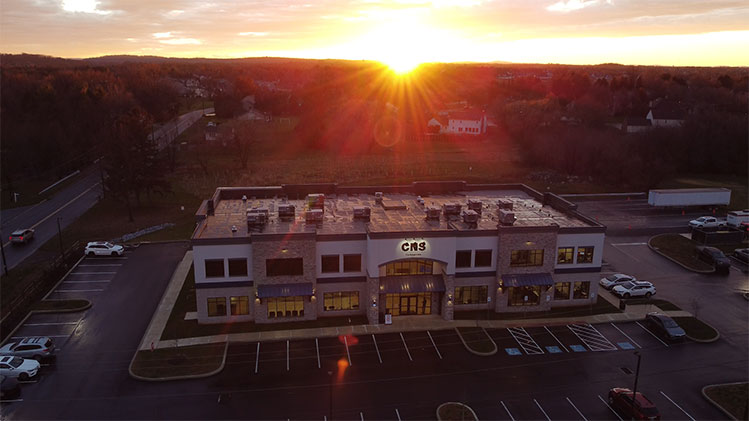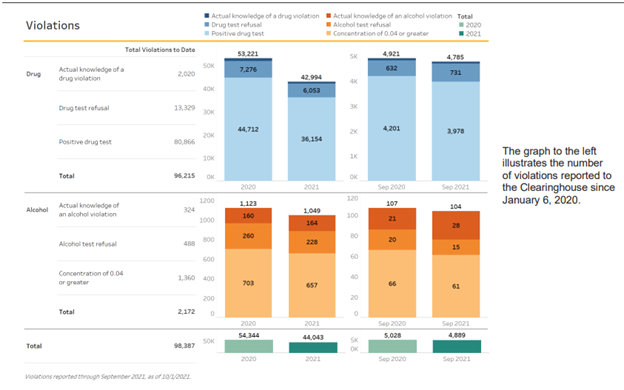Furry Friends Cause Trucking Border Delays At Canadian Border
To prevent reintroduction of rabies carried by dogs into the United States, new CDC regulations require proof of healthy pets at border crossing. Truckers who
We are a team of DOT Compliance and Licensing Professionals helping trucking and transportation companies remain safe, compliant, and profitable.
CNS or Compliance Navigation Specialists is DOT Compliance company that assists trucking and transportation companies remain DOT Compliant. We are part of a network of companies, CNS Companies, specializing in services related to the transportation, manufacturing, construction, service, education and medical industries.

A full-scale DOT Compliance Program managing a long haul carrier’s safety, compliance, licensing and more.
Learn more >>>
A DOT Compliance Program that keeps motor carriers compliant with the 6 Basic DOT Regulations required of all carriers.
Learn more >>>
Our Short-Haul/Construction Program is a full-scale program designed for private carriers that do not haul for-hire.
Learn more >>>
Our most comprehensive DOT Compliance Program, operating as your company’s off-site Safety Director or assisting your current safety personnel.
Learn more >>>
Our Non-CDL Program is a full-scale program managing safety, compliance, licensing and more for moving companies, couriers, landscapers, or any company subject to DOT regulations and does not employ CDL drivers.
Learn more >>>
Our DOT Audit Services cover a number of different types of DOT Audits that new and existing carriers will be subject to.
Our DOT Driver Services help trucking companies and carriers to stay compliant as they grow and hire more drivers.
Our DOT Vehicle Services focus on ensuring your vehicles are compliant with DOT Regulations, which is just as important as your drivers.
Our DOT Services for Special Carriers focus on companies outside of the typical motor carrier, like HAZMAT, Passenger and Bus Carriers.
CNS is part of a group of companies that offer other necessary services for the trucking and transportation industry, such as Commercial Trucking Insurance, CDL Training, Online Training Course, and even Healthcare.
Our DOT Licensing Services will cover you whether you are an existing company or just starting a trucking company. Our DOT Licensing Specialists can help you get up and running and in days with your DOT number, MC Authority, EIN, UCR, IFTA, 2290 HVUT, Fuel Taxes and can even set you up to get your Commercial Driver's License (CDL) with CNS Driver Training Center.
Our DOT Licensing Specialists will help you with every aspect of starting a trucking company. All you need to do is choose a name for your trucking company.
You will need to ensure your DOT Number, MC Authority, Vehicle Registration, etc. is all set up properly when you start your trucking business.
Our Licensing Specialists can help with all aspects of filing and renewing licenses, fuel taxes, etc.
CNS is part of a group of companies that offer other necessary services for the trucking and transportation industry, such as Commercial Trucking Insurance, CDL Training, Online Training Course, and even Healthcare.
To prevent reintroduction of rabies carried by dogs into the United States, new CDC regulations require proof of healthy pets at border crossing. Truckers who
CNS or Compliance Navigation Specialists is DOT Compliance company that assists trucking and transportation companies remain DOT Compliant. We are part of a network of companies, CNS Companies, specializing in services related to the transportation, manufacturing, construction, service, education and medical industries.
CNS Companies is a network of companies specializing in services related to the transportation, manufacturing, construction, service, education and medical industries. Our DOT Compliance division is handled by Compliance Navigation Specialists, CNS Insurance handles Commercial Truck Insurance, CDL training is managed by the CNS Driver Training Center and healthcare is managed by CNS Occupational Medicine.
We are a team of DOT Compliance and Licensing Professionals helping trucking and transportation companies remain safe, compliant, and profitable.
CNS or Compliance Navigation Specialists is DOT Compliance company that assists trucking and transportation companies remain DOT Compliant. We are part of a network of companies, CNS Companies, specializing in services related to the transportation, manufacturing, construction, service, education and medical industries.

A full-scale DOT Compliance Program managing a long haul carrier’s safety, compliance, licensing and more.
Learn more >>>
A DOT Compliance Program that keeps motor carriers compliant with the 6 Basic DOT Regulations required of all carriers.
Learn more >>>
Our Short-Haul/Construction Program is a full-scale program designed for private carriers that do not haul for-hire.
Learn more >>>
Our most comprehensive DOT Compliance Program, operating as your company’s off-site Safety Director or assisting your current safety personnel.
Learn more >>>
Our Non-CDL Program is a full-scale program managing safety, compliance, licensing and more for moving companies, couriers, landscapers, or any company subject to DOT regulations and does not employ CDL drivers.
Learn more >>>
Our DOT Audit Services cover a number of different types of DOT Audits that new and existing carriers will be subject to.
Our DOT Driver Services help trucking companies and carriers to stay compliant as they grow and hire more drivers.
Our DOT Vehicle Services focus on ensuring your vehicles are compliant with DOT Regulations, which is just as important as your drivers.
Our DOT Services for Special Carriers focus on companies outside of the typical motor carrier, like HAZMAT, Passenger and Bus Carriers.
CNS is part of a group of companies that offer other necessary services for the trucking and transportation industry, such as Commercial Trucking Insurance, CDL Training, Online Training Course, and even Healthcare.
Our DOT Licensing Services will cover you whether you are an existing company or just starting a trucking company. Our DOT Licensing Specialists can help you get up and running and in days with your DOT number, MC Authority, EIN, UCR, IFTA, 2290 HVUT, Fuel Taxes and can even set you up to get your Commercial Driver's License (CDL) with CNS Driver Training Center.
Our DOT Licensing Specialists will help you with every aspect of starting a trucking company. All you need to do is choose a name for your trucking company.
You will need to ensure your DOT Number, MC Authority, Vehicle Registration, etc. is all set up properly when you start your trucking business.
Our Licensing Specialists can help with all aspects of filing and renewing licenses, fuel taxes, etc.
CNS is part of a group of companies that offer other necessary services for the trucking and transportation industry, such as Commercial Trucking Insurance, CDL Training, Online Training Course, and even Healthcare.
To prevent reintroduction of rabies carried by dogs into the United States, new CDC regulations require proof of healthy pets at border crossing. Truckers who
CNS or Compliance Navigation Specialists is DOT Compliance company that assists trucking and transportation companies remain DOT Compliant. We are part of a network of companies, CNS Companies, specializing in services related to the transportation, manufacturing, construction, service, education and medical industries.
CNS Companies is a network of companies specializing in services related to the transportation, manufacturing, construction, service, education and medical industries. Our DOT Compliance division is handled by Compliance Navigation Specialists, CNS Insurance handles Commercial Truck Insurance, CDL training is managed by the CNS Driver Training Center and healthcare is managed by CNS Occupational Medicine.

Since the CDL Clearinghouse database went live in Jan. 2020, we can track that around 60,000 drivers each year have received some drug and alcohol violation.
If these drivers want to get back to work, they must complete the return-to-duty process and be a part of a SAP program for follow-up testing.
However, many of these drivers are terminated by their employer. But, if they continue to work through the return-to-duty process, they are eligible to seek employment elsewhere.

This brings up a frequently asked question: If a CDL holder is NOT employed and can’t get employed but wants to continue the follow-up process, can this CDL holder contract a consortium/third-party administrator (C/TPA) to act as a DER and send this CDL driver for the appropriate follow-up testing plan?
The short answer: No, unless they become an owner-operator. We will explain why after a quick review of the process.
Find a DOT SAP:
SAPlist.com is the #1 source for finding a Substance Abuse Professional
After a driver receives a failed drug test result, they must begin the return-to-duty/SAP process which can be split into two major sections: the time to return-to-duty to drive again, and the time to finish the follow-up testing program for the next 12-60 months.
This process begins with an evaluation by a substance abuse professional (SAP), as required in the federal regulations in 49 CFR Part 40 Subpart O. This is often considered the SAP process.
A return-to-duty drug test is a single test required by the DOT after successful completing the SAP process.
Read more for additional details on the SAP process.
Return-to-duty testing can only be done when the driver is CURRENTLY EMPLOYED.
If the driver is not employed, they cannot start their SAP program until they are employed and will be performing a safety-sensitive function. Basically, their progress would be paused until they are employed again.
If the driver is an owner-operator and have a truck, they would use their Consortium/TPA to manage their SAP process and follow-up testing schedule.
But why?
Remember, after a driver finished the SAP process and can return to safety-sensitive work, they still must have unscheduled follow-up testing for at least one year.
The need to be employed to have follow-up testing has been a requirement of the regulations for more than 30 years.
There are three main reasons why this is important.
First, the federal agency does not have jurisdiction over the general public, or someone who is not operating under their jurisdiction. If the driver is no longer employed or is not an owner-operator, they are not required to follow federal regulations until they are back in a safety-sensitive function.
Second, a driver cannot know his or her follow-up testing schedule or how long it will be. If they did, this could allow the person in recovery to continuing substance abuse and time to stop so they are clean before the next follow-up test.
If a driver does not know how long the follow-up testing program could continue, that will help the driver remain free of substance abuse long-term.
For example, a SAP could recommend 6 follow-up tests in the first 12 months, and then follow-up tests in the third and fifth year. A driver would not know this, which makes the preventive nature of follow-up testing more effective.
Third, absent safety-sensitive work for an employer, the follow-up testing would not be effective.
While a C/TPA can handle this process for a self-employed owner-operator, the role of the employer and job function is very important to successful implementation and recovery.
The entire point of follow-up testing that produces negative results is to show that the driver can safely operate in DOT-regulated safety-sensitive work.
In other words, the stress of the job could be a reason why some drivers take drugs or drink heavily. If you are unemployed, this trigger is not be tested and might be easier for a driver to get through the follow-up program and later continue substance abuse while driving.
If you are currently unemployed and still must finish the return-to-duty or follow-up testing process, don’t be discouraged. There are many employers who will hire someone with a past refusal or positive test.
For help getting hired, it is often recommended to explain that you will pay for these directly observed tests instead of the potential employer.

EPA’s new truck emission standards will require 25% of new sleeper-cab tractors to be zero-tailpipe-emission trucks by 2032. On March 29, 2024, the U.S. Environmental

Did you know that there have been more than 3.4 million brakes inspected since the program’s inception in 1998? As we prepare for CVSA’s Brake

CVSA scheduled Brake Safety Week from Aug. 25-31 with the focus of this year’s inspections around the condition of brake linings and pads. After last year’s strange

The passage of Prop. 22 saved Uber, Lyft, and other gig workers from AB5, spending more than $200 million to write their own labor law…
Our DOT Compliance Programs ensure it is your top priority and keeps your business running.
Receive the latest transportation and trucking industry information about FMCSA and DOT Audits, Regulations, etc.

EPA’s new truck emission standards will require 25% of new sleeper-cab tractors to be zero-tailpipe-emission trucks by 2032. On March 29, 2024, the U.S. Environmental

Did you know that there have been more than 3.4 million brakes inspected since the program’s inception in 1998? As we prepare for CVSA’s Brake

CVSA scheduled Brake Safety Week from Aug. 25-31 with the focus of this year’s inspections around the condition of brake linings and pads. After last year’s strange
Join our monthly newsletter and stay up-to-date on trucking industry news and receive important compliance and licensing tips.
Join our monthly newsletter and stay up-to-date on trucking industry news and receive important compliance and licensing tips.